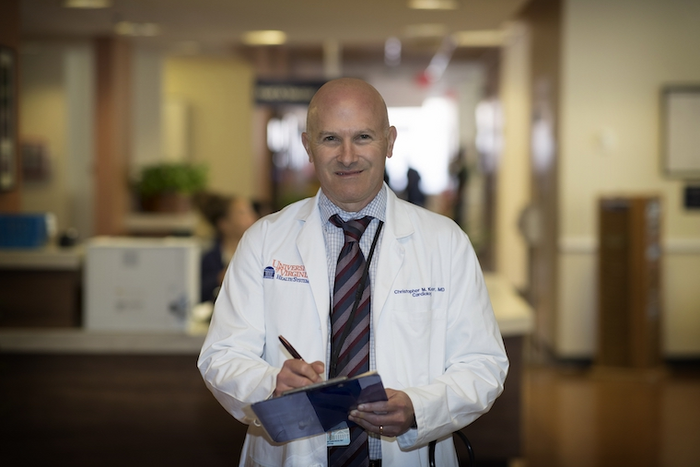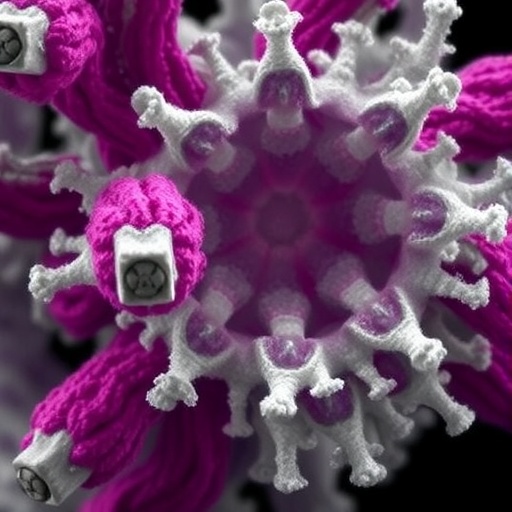Cardiovascular experts at UVA Health have found a new way to track peripheral artery disease (PAD), a serious medical condition involving atherosclerosis in the leg arteries that affects more than 200 million people worldwide. The researchers say the approach will greatly benefit efforts to better understand the condition, which diminishes blood flow to the limbs, and to improve treatment options for patients.

Credit: Dan Addison | University of Virginia Communications
Cardiovascular experts at UVA Health have found a new way to track peripheral artery disease (PAD), a serious medical condition involving atherosclerosis in the leg arteries that affects more than 200 million people worldwide. The researchers say the approach will greatly benefit efforts to better understand the condition, which diminishes blood flow to the limbs, and to improve treatment options for patients.
The UVA researchers were able to use a new magnetic-resonance imaging (MRI) technique at the end of exercise to understand the effects of PAD in the calves of patients with the disease and distinguish them from normal volunteers. The approach they used, called chemical exchange saturation transfer, or CEST, produced results comparable to the current gold standard, which does not produce an image. CEST, they found, offered added benefits without requiring highly specialized equipment unavailable to many hospitals and researchers.
“The beauty of CEST is that it creates an image of energy stores in the muscle which we can match to images of blood flow,” said researcher and imaging expert Christopher M. Kramer, MD, the chief of UVA Health’s Division of Cardiovascular Medicine and a professor of cardiology and radiology at the University of Virginia School of Medicine. “This gives us a new understanding of how atherosclerosis in the leg arteries causes problems in the muscles downstream.”
Understanding Peripheral Artery Disease
PAD affects more than 7% of Americans over age 40 and more than 29% of those over 70. The disease can cause pain when walking, coldness or numbness in the lower leg, painful leg or arm cramps, difficulty sleeping and erectile dysfunction, among other symptoms, though it also may cause no symptoms at all.
The lack of adequate blood flow to the limbs may make it difficult for wounds to heal and can, in severe cases, lead to amputation. Existing treatments include medicine to improve blood flow and manage pain; for appropriate cases, doctors may also consider options such as surgery or the placement of a stent to open clogged arteries.
The new diagnostic approach identified at UVA will advance efforts to better understand and treat PAD. To see if CEST would work for this purpose, the research team conducted a clinical trial comparing CEST with the current gold-standard approach, phosphorus magnetic resonance spectroscopy. The researchers used CEST to image 35 volunteers with PAD and compared the results with imaging obtained from 29 control subjects after they performed calf exercise in the MRI scanner. They found that CEST was effective at identifying PAD in the lower legs, differentiating patients from normal subjects, and the results compared favorably to phosphorus magnetic resonance spectroscopy.
CEST, they concluded, could offer many advantages for researchers. CEST has better special resolution, creates an image and does not require costly equipment needed for phosphorus magnetic resonance spectroscopy. That means more centers could take advantage of the approach.
CEST also can be combined with other magnetic resonance imaging methods that measure blood flow in the calf to better understand the effects of PAD, the researchers note.
“Combining CEST with the techniques for measuring muscle blood flow with MRI enables an exciting new approach to studying potential benefits of established and novel therapies in this disease,” Kramer said.
Findings Published
Kramer and his collaborators have published their findings in the medical journal Circulation: Cardiovascular Imaging. The team consisted of Helen L. Sporkin, Toral R. Patel, Yaqub Betz, Roshin Mathew, Christopher L. Schumann, Craig H. Meyer and Kramer.
The work was supported by the National Institutes of Health, grants R01 HL075792, T32 HL007284 and T32 EB003841.
To keep up with the latest medical research news from UVA, subscribe to the Making of Medicine blog.
Journal
Circulation Cardiovascular Imaging
DOI
10.1161/CIRCIMAGING.121.013869




